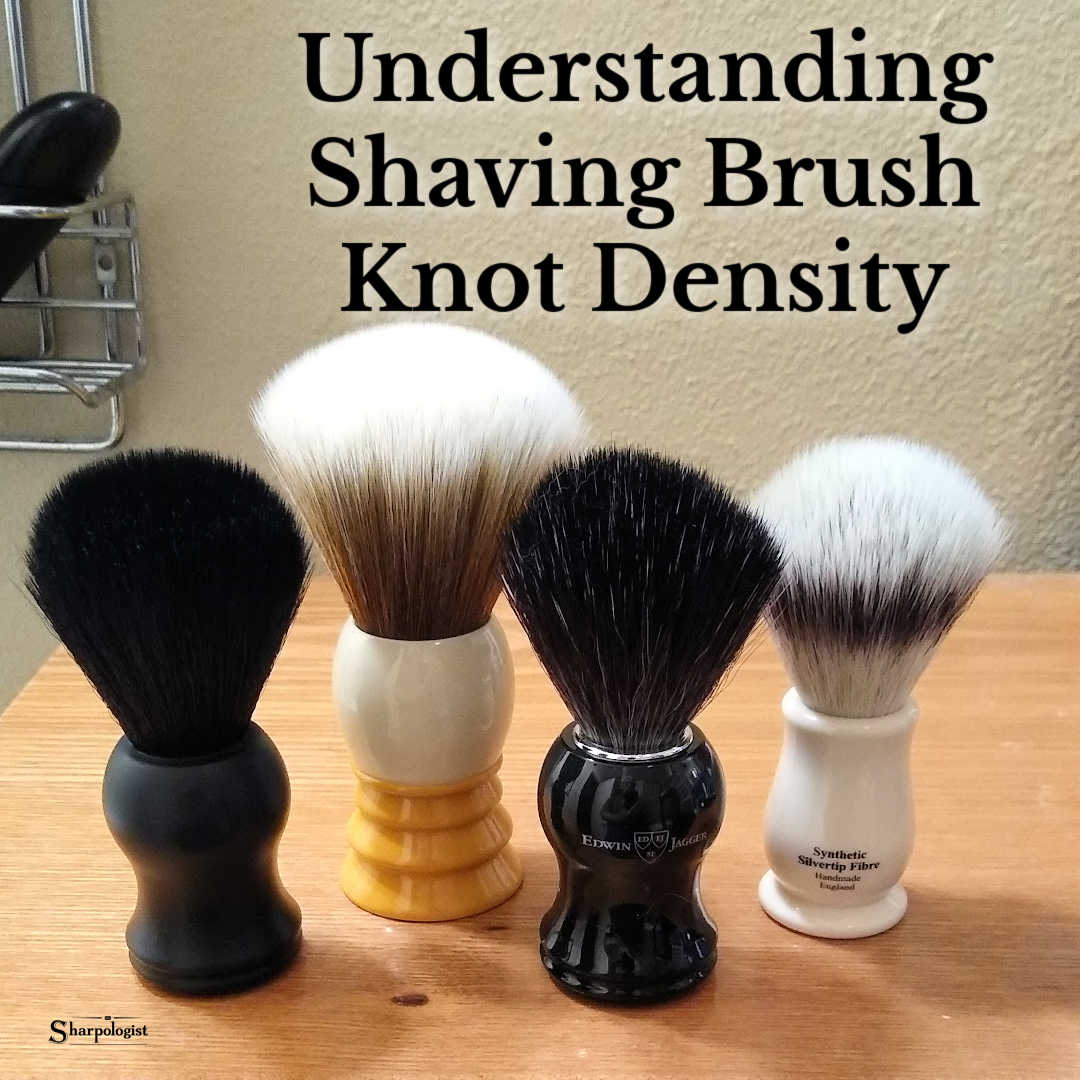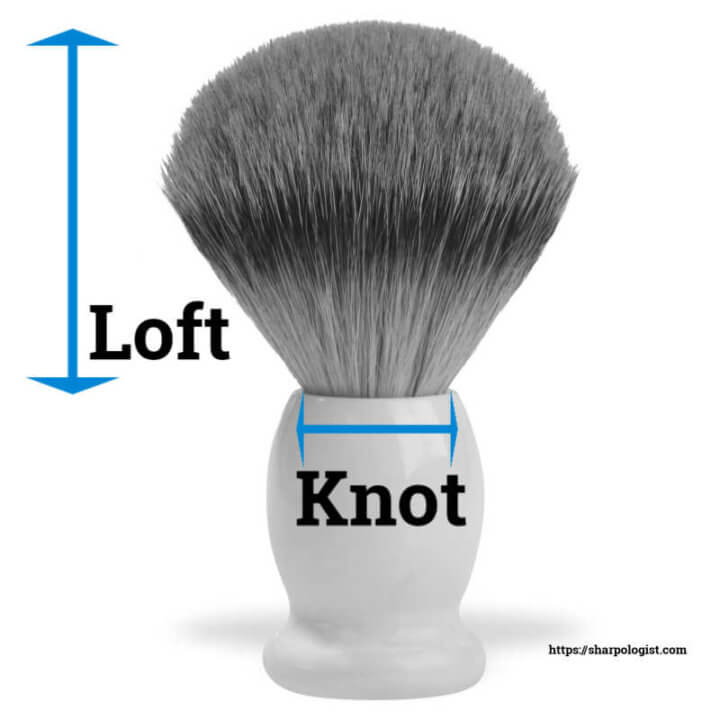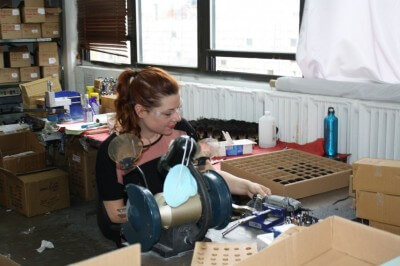
When it comes to wet shaving, the quality of your shave is often dictated by the tools you use. One essential gear is the shaving brush, and an important factor in determining its performance lies in its knot density.
This post will try to unravel the mysteries surrounding this characteristic, exploring various hair types like badger, boar, horsehair, and synthetic fiber brushes while discussing how their hair densities affect your overall shave experience.
Brush Knot Density – Key Takeaways
- Shaving brush knot density refers to the number of hair fibers packed into a specific surface area within the brush knot, and it greatly impacts the overall quality and experience of your shaving routine.
- A higher knot density ensures that more badger, boar, horsehair or synthetic fiber is packed into the handle of your shave brush – leading to an improved lathering process while providing superior exfoliation.
- When choosing the right shaving brush knot density for you, consider your skin and beard type as well as personal preferences. Experimenting with different types of hair and densities can lead to finding the perfect shaving brush that enhances your wet shave experience.
Shaving Brush Knot Density: Definition And Importance
Shaving brush knot density refers to the measure of how many bristles are packed into the knot, and it is an important factor in achieving a successful shave.
Explanation Of Knot Density
Knot density, in the context of shaving brushes, refers to the number of hair fibers packed into a specific surface area within the brush knot. A higher knot density means that there are more hair fibers (badger, boar, horse or synthetic) per unit area in the brush knot.
A great example can be found amongst badger hair shaving brushes with different levels of hair density. High-density knots contain up to 1.5 times more badger hairs compared to standard-density knots, resulting in an increased lathering ability as well as improved backbone or stiffness for better control during application.

Importance In Shaving
Understanding the importance of shaving brush knot density is crucial for men who wet shave, as it vastly impacts the overall quality and experience of their grooming routine.
A higher knot density ensures that more badger, boar, horse hair or synthetic fiber is packed into the handle of your shave brush – leading to an improved lathering process.
An anecdote worth considering involves two different brushes with varying levels of hair density – one low-density brush might struggle in retaining enough lather during application while its high-density counterpart effortlessly allows for generous amounts without frequent reapplication.
As seen in this example, investing in a shaving brush with optimal knot density could save time and resources spent on constant product usage while simultaneously offering better results due to even distribution across your skin’s surface.
Factors To Consider When Choosing Shaving Brush Knot Density
Unfortunately, like many other aspects of shave brush grading, there is no objective specification on knot density. You are going to have to rely on the manufacturer’s description and feedback from those already using a particular brush to determine density.
Consider your skin and beard type, as well as personal preferences when choosing shaving brush knot density.

Skin And Beard Type
Considering your skin and beard type is essential when determining the ideal knot density for your shaving brush. This is because different types of hair and facial features require varying levels of bristle stiffness or softness for optimal performance during a wet shave.
For instance, if you have thick, coarse facial hair or dense beard growth, a shaving brush with higher knot density and more backbone might be more beneficial.
On the other hand, if you have sensitive skin that’s prone to irritation or redness after shaving, paying attention to both hair density and material will help guide your choice.
A badger hair brush with lower knot density might be perfect for this scenario – it offers gentle yet effective exfoliation while maintaining the softness required to prevent unnecessary discomfort during the shave.
Personal Preferences
Choosing the right shaving brush knot density is a personal choice based on your individual needs and preferences. Consider factors like how sensitive your skin is, how thick or coarse your beard hair is, and how much lather you want to create.
If you prefer a more luxurious experience, consider opting for higher-density knots made of badger or horsehair. For those who prefer more eco-friendly alternatives, synthetic fiber or boar hair brushes may be a better option.
Keep in mind that different knot densities will have varying levels of backbone and softness, so experimenting with different options can help you find the perfect balance for your shaving routine.
Conclusion: Finding The Right Knot Density For You
Now that you understand the importance of shaving brush knot density, it’s crucial to take into account your skin and beard type, as well as your personal preferences when choosing the right one for you.
A denser knot is better suited for individuals with thicker facial hair, while a less dense brush may be more comfortable on sensitive skin. Experimenting with different types of hair and densities can lead to finding the perfect shaving brush that enhances your wet shave experience.
FAQs:
1. What is shaving brush knot density?
Shaving brush knot density refers to the number of individual bristles or hairs packed into the shaving brush head. The higher the knot density, the more bristles there are in the brush and, generally speaking, the firmer and stiffer it will feel when lathering up.
2. How does shaving brush knot density affect my shave?
The density of your shaving brush affects how much water and soap it can hold as well as its overall performance when creating a lather on your face. Higher-density brushes tend to be firmer and provide more control while applying foam, whereas lower-density ones might require more work to generate enough suds.
3. Is high-density or low-density better for a shaving brush?
There isn’t necessarily a right or wrong answer here — some prefer low-density brushes because they feel softer on their skin, while others swear by dense knots that offer excellent control during application. It may depend on personal preference, style of shave desired (e.g., close vs gentle), type of hair being shaved (e.g., coarse vs fine), etc.
4. How do I choose a suitable knot density for my needs?
Choosing a suitable knot density ultimately comes down to what you’re looking for in your shave experience. You should consider factors like personal preference regarding softness/firmness; ease-of-use during application; target areas being shaved (face vs body); skin sensitivity level/preferences; budget/brand preferences etc.. Researching different brands & materials used can also help inform choices in case one offers particular properties – such as natural boar hair versus synthetic fibers – over another type based upon specific criteria relevant towards achieving desired outcomes/intentions!
